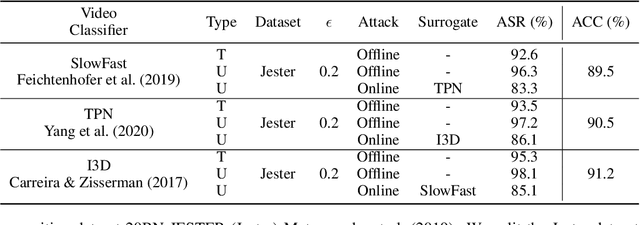NetFlick: Adversarial Flickering Attacks on Deep Learning Based Video Compression
Paper and Code
Apr 04, 2023



Video compression plays a significant role in IoT devices for the efficient transport of visual data while satisfying all underlying bandwidth constraints. Deep learning-based video compression methods are rapidly replacing traditional algorithms and providing state-of-the-art results on edge devices. However, recently developed adversarial attacks demonstrate that digitally crafted perturbations can break the Rate-Distortion relationship of video compression. In this work, we present a real-world LED attack to target video compression frameworks. Our physically realizable attack, dubbed NetFlick, can degrade the spatio-temporal correlation between successive frames by injecting flickering temporal perturbations. In addition, we propose universal perturbations that can downgrade performance of incoming video without prior knowledge of the contents. Experimental results demonstrate that NetFlick can successfully deteriorate the performance of video compression frameworks in both digital- and physical-settings and can be further extended to attack downstream video classification networks.
 Add to Chrome
Add to Chrome Add to Firefox
Add to Firefox Add to Edge
Add to Edge